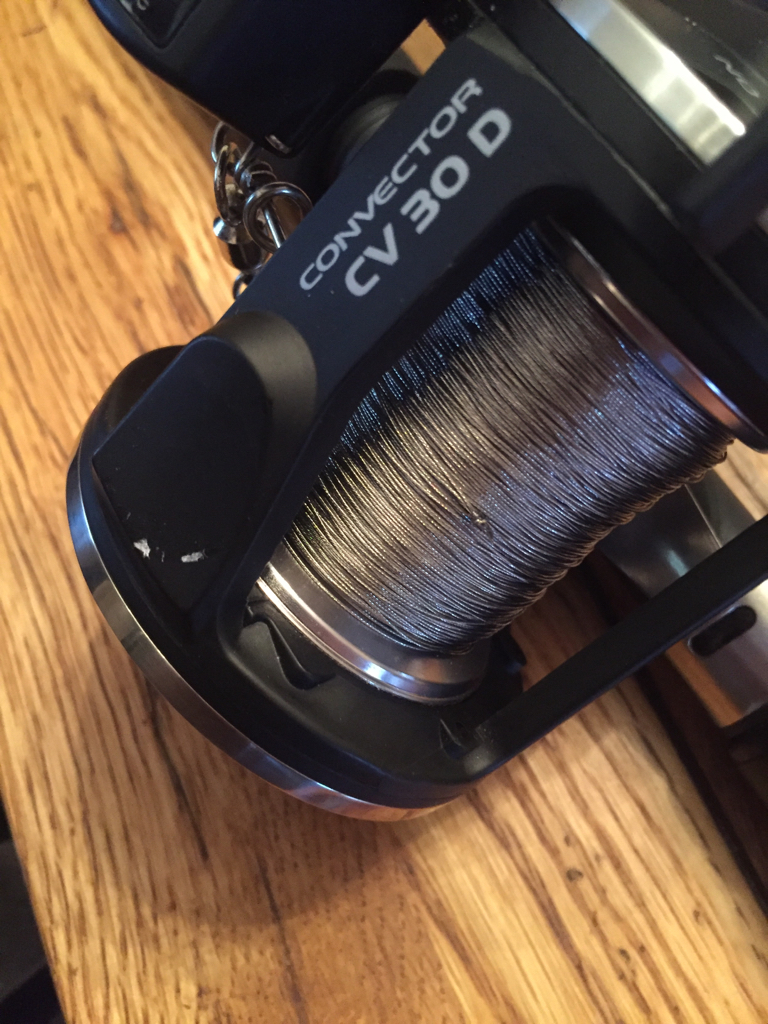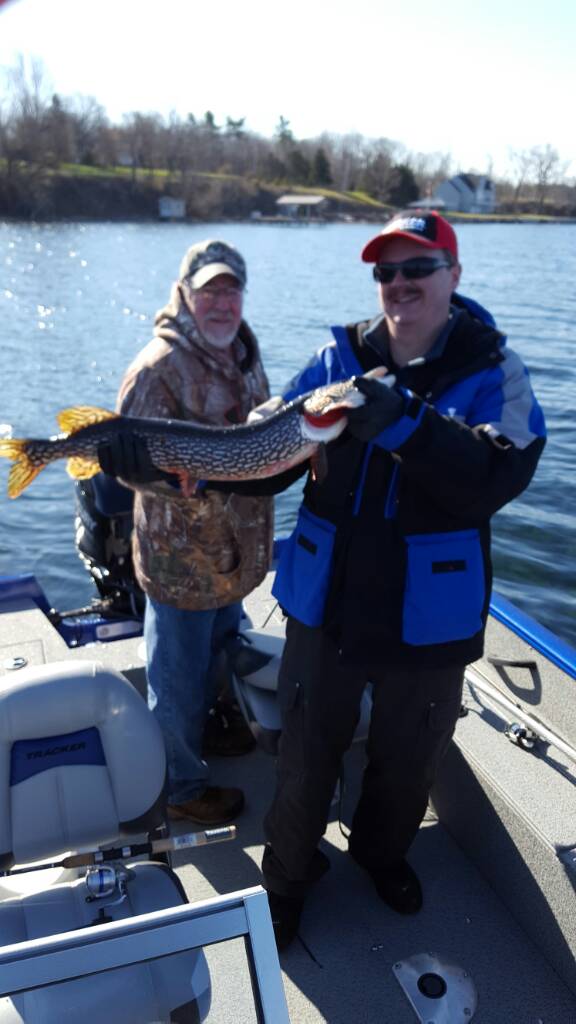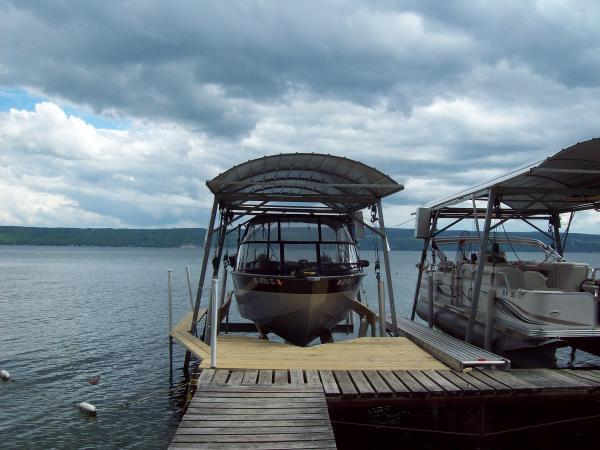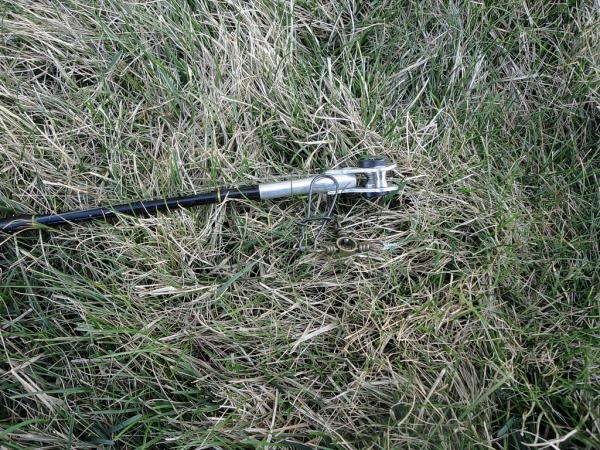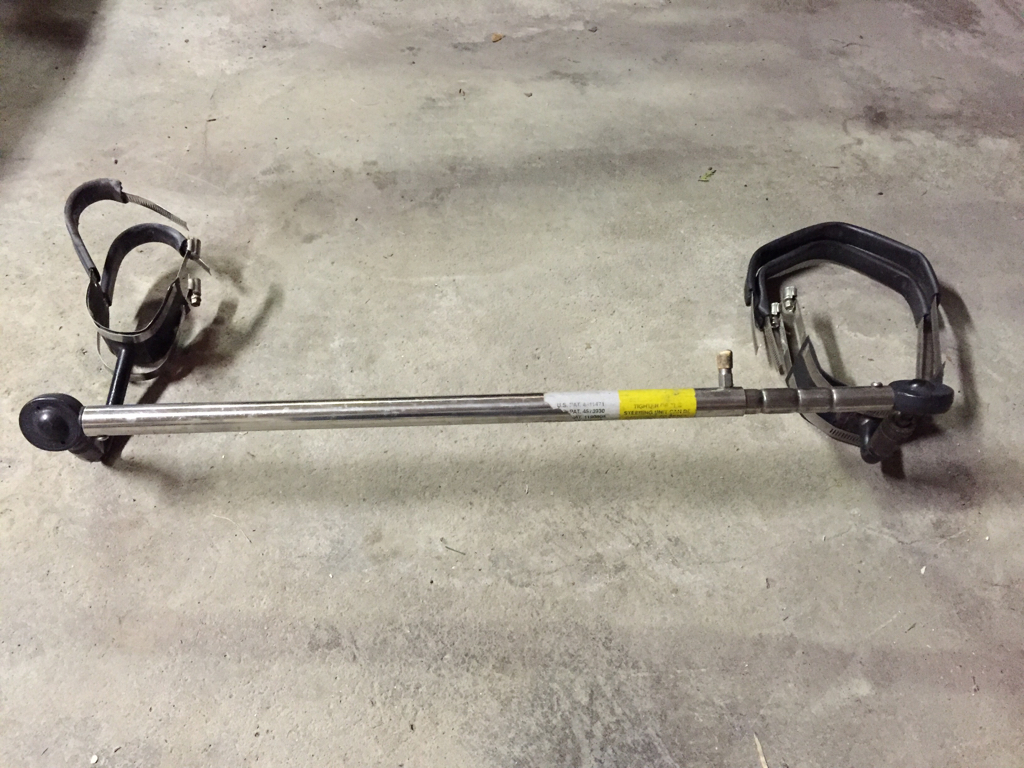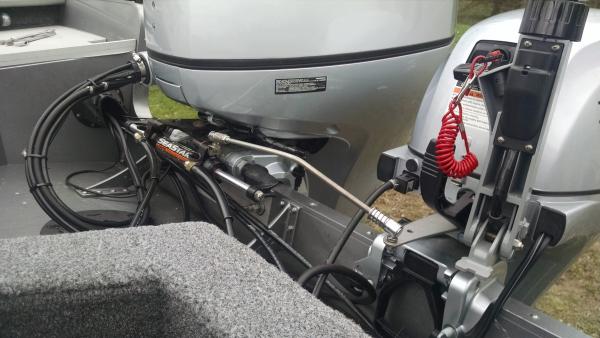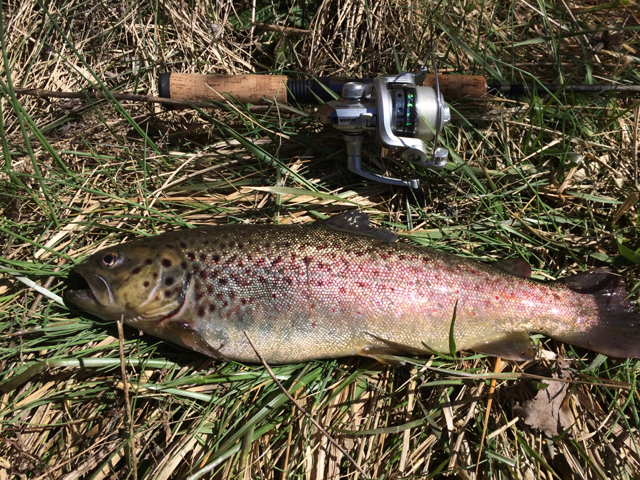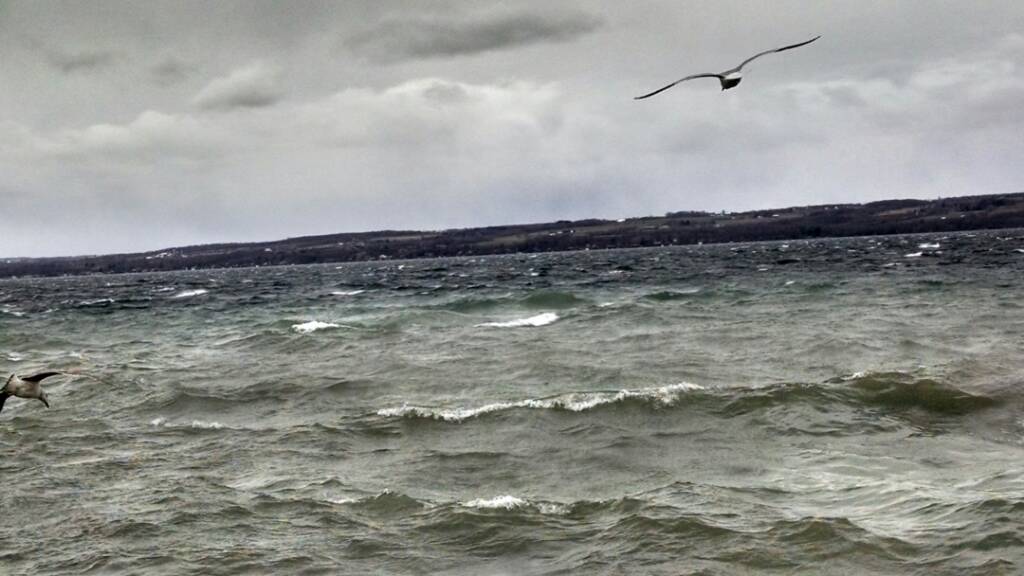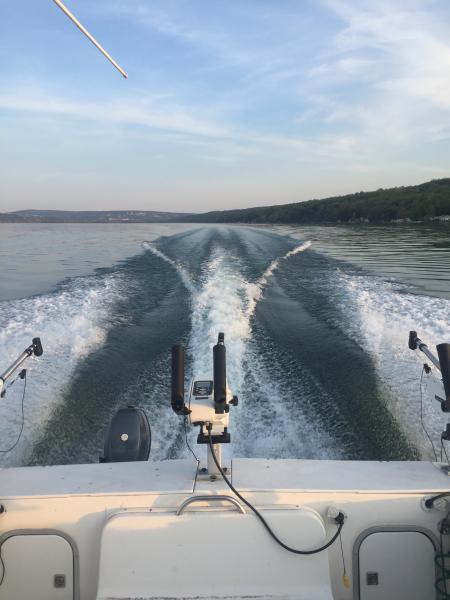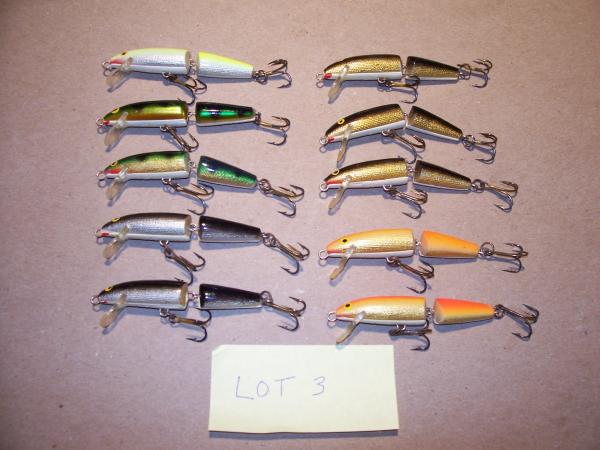-
Posts
13,859 -
Joined
-
Last visited
Content Type
Profiles
Forums
Events
Gallery
Store
Everything posted by Sk8man
-
The guys have given you a good "wire 101" start. I would emphasize that you don't let out the wire using the free spool and thumbing it. What you do is set your drag so that it just creeps out evenly and slowly while you do other stuff and intermittently monitoring it. If you try the thumbing approach it can get away from you as well as go down too fast tangling everything up on the way. Frequently check the terminal end of the wire each time (trip) before using it for any broken strands and re-do the connection if you spot any break in it. Set your drag so that wave action won't trigger it but a fish will and watch your rod tips constantly as it can tell you when you are too fast speed wise as well as when a small fish may be on because especially with lakers sometimes they feel the lack of "give" of the wire and just come right along without fighting until they feel you pulling on the rod. Don't "horse" the fish because the wire is unforgiving as may be the fluoro leader (little to no stretch) reel the wire in smoothly and observe the wire coming on the reel to make sure it doesn't cross thread on you. When you are transporting it is critical to maintain tension on the wire at all times whether using a two piece rod or single. Some folks use a bungee setup to maintain tension. others fasten the swivel to a rod eye, while others keep their dipseys right on the rig strapped to the rod in various ways....whichever way you choose it must keep the tension. The 30 lb wire needs more attention than say 60 lb (on my Seth Green rigs for example which have lasted over thirty years and are still like new) The thinner the wire the more likely the wire will develop curly Q's in it and retain "spool memory" so as already mentioned periodic monitoring is important and just cut out small section where it occurs as necessary. You won't ever totally get rid of the problem but it can be controlled this way. As far as maintenance of the wire itself as long as the tension is kept and any kinks deleted from it the only thing to remember is during long periods of storage back off the drag on the reel so that it will hold the wire but not be under full spool tension. The turning radius of the boat with your particular setups will depend on many things (rod spacing, angles, rod length, trolling speed, and overall configuration of your setups. Suffice it to say you want to minimize tangles as they are particularly problematic with wire (and combined with stuff like leadcore or braid etc.). I know I'm sounding pessamistic but keep a pair of wire cutters handy for these potential situations...like it or not....s..t happens . Make any turns gradual and observe the angle and position of your lines and adjust accordingly if necessary.
-
-
-
-
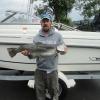
Sold / Closed 92 Evinrude 6hp / Ez steer bar n bracket
Sk8man replied to Frogger's topic in Classifieds - Buy, Sell, Trade or Rent
-
Mike makes some very good points and I agree with him.
-
-
I have a hunch that the connector fittings may be upside down on that installation in the pic. Mine are facing upward so that when you disconnect the rod you just lift up the rod when releasing from the boat when necessary. I should think it would also be easier to drop the rod in the water with them pointing downward as has been done reportedly by folks on here. I'd be interested in an experienced marine installers take on it.
-
fishmaster -Yes Seth and I went to Middle School together and he told me back then in 18 hundred something never to use Power Pro braid for my rig lines....I should have listened to him When I mentioned the Seth green rig being used on Keuka I was talking about its start in being used in the conventional way it is today ((i.e. vertically in the water column with horizontal leaders) but you are correct that the concept itself originated before that point of use.
-

Flea resistant main line suggestions?
Sk8man replied to codybuehler's topic in Tackle and Techniques
Good luck with it and with the fishing. -

Flea resistant main line suggestions?
Sk8man replied to codybuehler's topic in Tackle and Techniques
Cody if it were me I'd just strip off a few yards of the Sea Flee and keep going with it unless it is in real bad shape and wait for the bulk spools if still needed. When the fleas are really thick out there nothing is foolproof. I know some folks swear by the 30 lb Big Game and make the assumption that line diameter is the critical factor but over the past few years I have come to realize that the concentrations of fleas (different types too) vary greatly throughout each body of water and also within the water column itself. Last year on Keuka they were so thick in spots that I couldn't even get the 150 lb test downrigger wires to come in because they were so clogged. The slippery surface of the Sea Flee line helps shed them but it too is no guarantee. I think that often some folks are trolling at different depths and different parts of the lakes (perhaps with different type of fleas) and because the fleas vary greatly in local concentrations they assume that because they have a certain line diameter that it is working miracles when in fact they may not be going through really large concentrations or at those depths where the large concentrations are occurring. You might want to even experiment by having a couple of rods re-spooled with the 30 Big Game and leave the Sea Flee on a couple and run one of each at similar depths for the same amount of time and see for yourself which works better before committing to the expense. Just thinking out loud -

Any suggestions for trolling in Hemlock?
Sk8man replied to SwedishFish's topic in Finger Lakes Discussion
Fishing Hemlock with Seth Greens can be a good idea but I think you'd want to have a bigger boat/motor setup as they create a bit of drag especially if you get something big on or hung up on something and I think the electric motor would be really struggling and using a lot of juice just trying to trollwith it as well. Good way to fish but could be taxing and perhaps even unsafe with your current setup. -

It's official, < two months til NLTD weekend
Sk8man replied to lakebound88's topic in Finger Lakes Discussion
-
-
Dre - usually when it comes into the 40's in the shallower sections of water fished. A lot of places they have started now (best on warm evenings with the wind blowing TOWARD you). I'd say 1/2 inch would work fine on the livers. They usually "home" right in on even small pieces if there in abundance. P.S. I re-read the original question and I thought when I first answered that it was geared toward when they first seem to start up hitting (e.g. 40's).....50's is more accurate for high activity biting. and Mike (below) is right on target.
-
-
-

Sold / Closed 10 RAPALAS J-7
Sk8man replied to rod hog's topic in Classifieds - Buy, Sell, Trade or Rent
-

Sold / Closed 10 RAPALAS J-7
Sk8man replied to rod hog's topic in Classifieds - Buy, Sell, Trade or Rent
-
Most of the problems with the boards can be cured by the use of common courtesy and basic good manners toward other fishermen. It has been disappearing for quite some time now. It is the same with the perch fishing....people either follow the boats around or when they see a bent rod they crowd in and cast sinkers into your boat, come in or leave with motors going full blast etc......these are big bodies of water out there and there is no need for most of the crap that goes on out there if folks weren't so self-centered and inconsiderate...all it takes is a few to set the pattern in motion. Playing "chicken" with the boards has never been a great idea
-
The 50 braid does a great job cutting through the water but I have lost two entire rig lines made of it with all the equipment attached so that was it for me....I just don't trust it for that particular application never any problem with the other setups but some of my buddies prefer braid and it works for them (sort of like the downrigger issue of braid vs. wire you need to have confidence in whatever you use). I also think it may be a bit more important if you do a lot of deep fishing (over 100-150 ft or more) in that braid reduces "blowback" but within my major range above that it isn't much of a problem I just use heavier sinker if needed..
-
It is a multiple leader (up to 5 maximum now) trolling system with the leaders spaced apart (often 20-25 ft apart) used primarily for deep water trolling for trout and salmon. A 2 -4 lb weight is at the bottom of it and a variety of depths can be trolled at a single time with just one setup so that you can have 5 lures going through say 100ft at a time. It is very effective and especially when the thermocline forms in the lakes as it can be set up to cover above below and within the thermocline itself maximizing your potential for fish of various targeted species. The Seth Green was named for it's originator who fished it first on Keuka lake in the 1800's and it is also called a "thermocline rig" or just plain "rig". He also started the first trout fish hatchery (Caledonia. NY I believe). Some folks refer to it as "meat fishing" and various other names and sometimes in a derogatory way and they sometimes say it isn't worth doing because you can't feel the fish (especially small ones) with the heavy sinker and rods etc. but my suspicion is that most of those people haven't even tried it, don't understand how to actually do it, or are too lazy to do it (it does entail some work) because it is truly a lot of fun and one of my favorite ways to fish out of all the fresh and salt water fishing techniques.
-
You're very welcome
-
Battlehammer - in most cases it makes little difference but I test out my spoons at the side of the boat too. If there is any doubt I use a smaller size hook. I seldom lose fish on these singles and when I do it is usually my own fault Honeybees can be sensitive because they are a pretty lightweight spoon as are Suttons etc. but basically all my spoons have these hooks on them. (I also "tune" my spoons by bending some of them to get the action I want.)
-
Yes they have been getting marginals and dinks off the pier for weeks but the real good ones seldom come in there and I haven't seen any what I call "real" perch taken when I've been down there. The two other (multispecies) spots I noted above have become too well known already but the guys who fish them know where I'm talking about.


